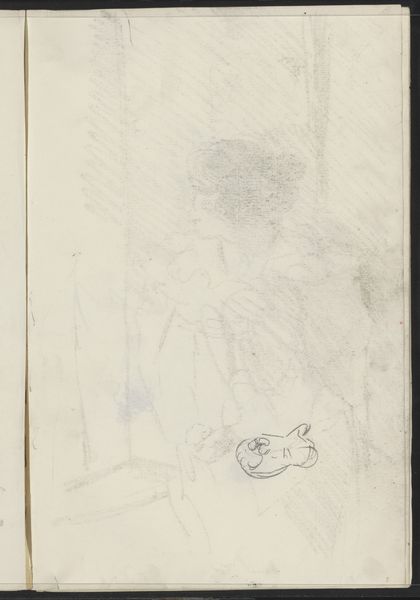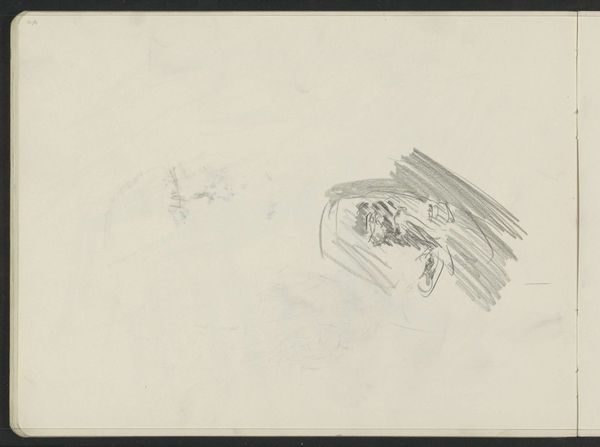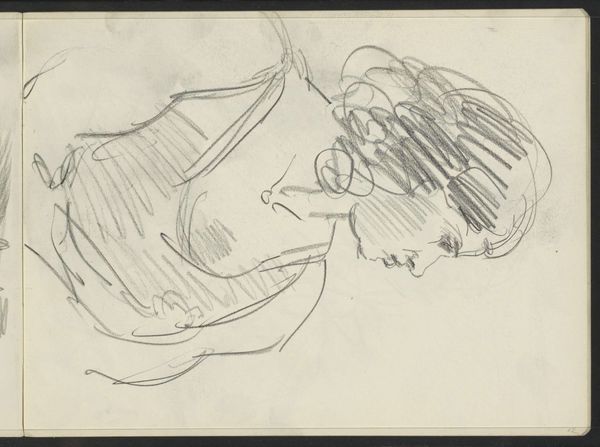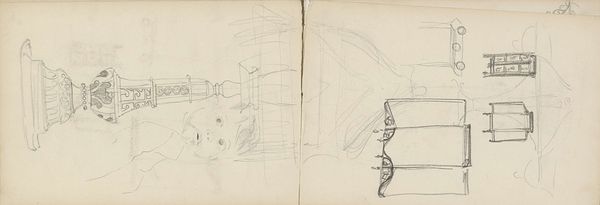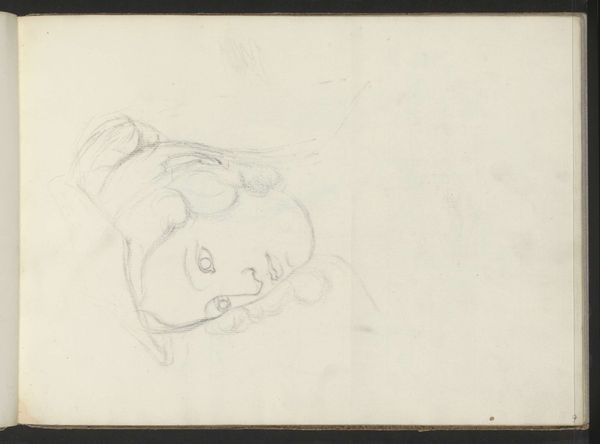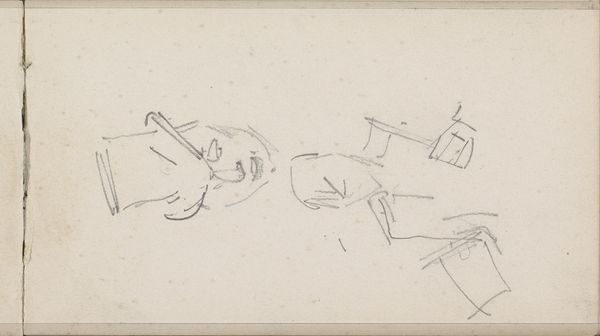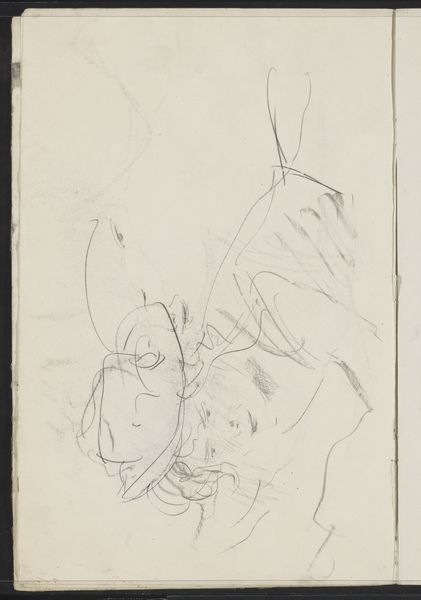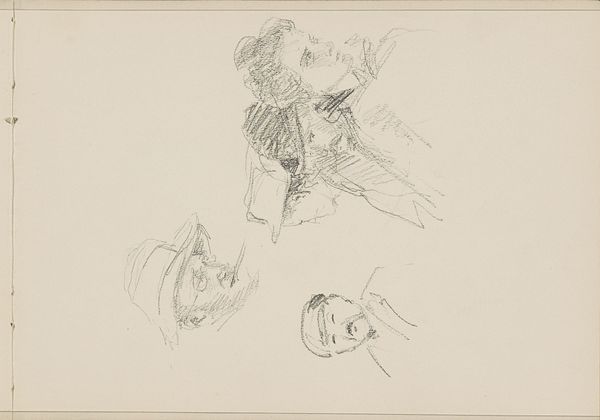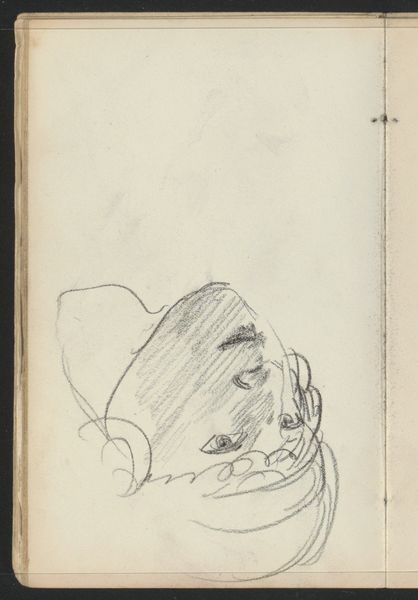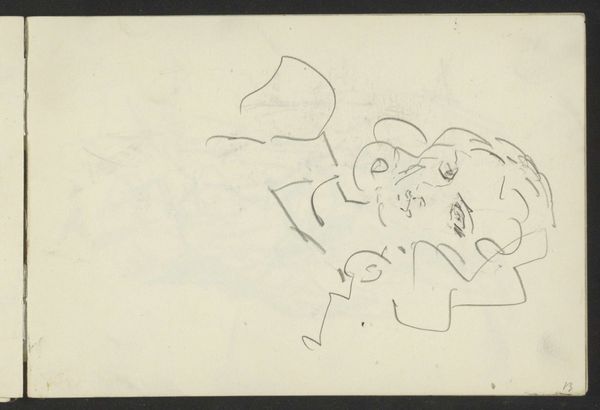
Copyright: Rijks Museum: Open Domain
Editor: This is Isaac Israels' "Vrouwenhoofd met hoed," or "Head of a Woman with Hat," likely made with pencil and ink sometime between 1875 and 1934, currently held at the Rijksmuseum. It feels like a quick sketch, very intimate. What catches your eye in this work? Curator: This sketch, precisely because it’s seemingly unfinished, reveals the artist’s process and the art world that supported these practices. We are granted access to a private moment. Does the sketch highlight issues around gender representation and spectatorship during that time? How does presenting a "preparatory drawing" of a woman with a hat disrupt typical, perhaps idealized, representations? Editor: That's a fascinating angle. I hadn't thought about the politics of showing something so seemingly informal. So you are asking whether museums changed the way that women in particular could express themselves and appear in public at the time. Curator: Exactly. Think about the rise of impressionism and modernism during this period. What role did rapid sketches, like this one, play in shaping modern aesthetics and challenging established artistic norms, especially in relation to women's public image? Also, it's important to consider how this sketch circulates within a museum today. How might exhibiting sketches elevate their status and shift the viewer's perspective? Editor: So it's not just about the woman in the picture, but also how we, as viewers, have been trained by art institutions to value even unfinished works, and to look for specific visual signatures or aesthetics as evidence of artistic quality, which at the time may have opened the door for how woman were received into art. Curator: Precisely. Museums play a significant role in shaping public perceptions of art. Placing it on display provides historical insight of institutions, artistry, and gender in a broader cultural context. What is the public role of art? And whose standards of representation do museums preserve or challenge? Editor: It really makes you think about what we consider worthy of being in a museum and how our ideas have changed over time. Thanks, that perspective really shifted my view of it!
Comments
No comments
Be the first to comment and join the conversation on the ultimate creative platform.
